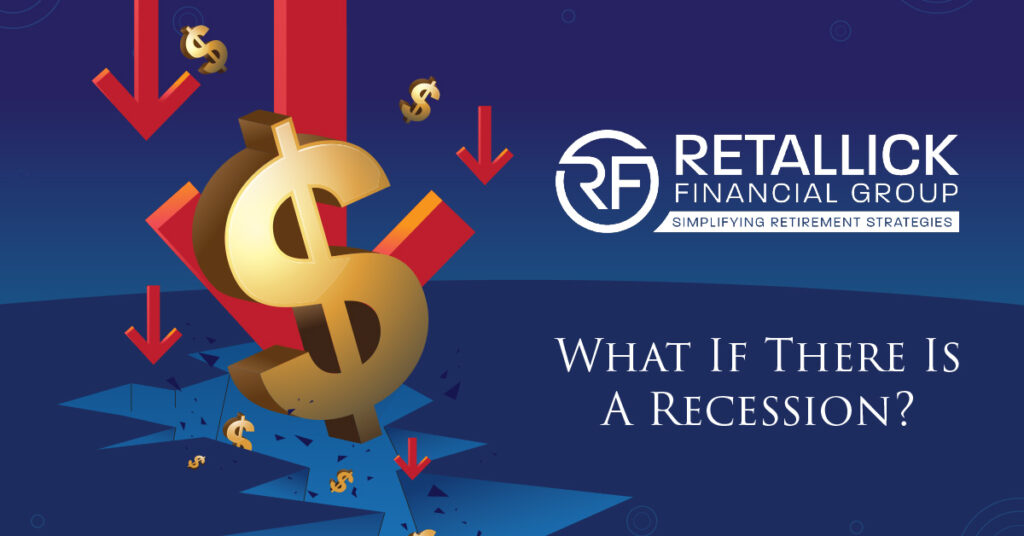Wall Street economists are panicking after yields on two-year Treasury notes moved above yields on ten-year notes. Economists track how the interest rates of different maturity levels vary, looking for signs of coming changes in the economy. When short-term interest rates are higher than long-term interest rates, it’s what’s known as an inverted yield curve. And, sometimes, it can be a sign of a recession coming.
What is an Inverted Yield Curve?
The yield on two-year Treasury notes recently hit 2.44%. Meanwhile, on ten-year notes, it lagged behind to 2.38%. In other words: the differential between yields inverted. Something like this happened before the recessions in both the 1980s and 2000s. The logic behind this goes that investors expect the Fed to push up interest rates to fight off inflation in the short term, and the result is that it ends up causing a recession, and having to reverse those rate increases later on.
Beyond this, however, inverted yield curves can cause other problems. Banks usually borrow money in the short term and then lend it in the long term. When short-term rates are higher than long-term rates, banks are faced with profit pressures. Additionally, this cuts economic activity.
Sometimes a yield curve inversion and the following recession is the necessary price to counteract high inflation. For example, the Fed used this tactic to bring down high inflation in the early 1980s. Other times, though, the Fed goes too far. In 2006, the central bank pushed its benchmark short-term rate above 5%, while long-term interest rates remained below that. A financial crisis in 2007 and 2008 followed.
Because of this history, Fed officials are now closely watching potential signs in the yield curve. Yield curves can be measured using interest rates across a wide spectrum of maturities, ranging from 30 years to literally overnight. Some inversions matter much more than others. Although investors often look at the differences between yields on two-year and ten-year Treasury notes, some Fed researchers will actually tell you that those aren’t the rates that matter the most.
The relationships of rates over shorter horizons of less than two years may be a more accurate measure of the risk of a recession. You can compare current three-month Treasury bill rates to rates eighteen months in the future. By doing this, you’ll find that there aren’t actually signs of a recession. Short-term rates are much lower than expected rates eighteen months from now, so, there might not be a recession after all.
What if There Is a Recession?
Altogether, this information seems to be telling us that the Fed has room and time to raise short-term interest rates in the near future. Hopefully, inflation with recedes as this happens. But, if it doesn’t, and rate increases continue into 2023 or beyond, then a recession could become a more plausible threat than it is now. So, looking at things long-term, what can you do to protect your money if a recession happens?
Well, you should be cautious. Caution is a virtue when it comes to long-term investing. You should be prepared for the next bear market long before it occurs, and be in a better position to handle it. Here are a few things you can do to protect your money.
Maintaining Balance Within Your Portfolio
The most important thing you can do to mitigate risk is to keep your portfolio diverse. Some investors believe having their savings in a mutual fund means they’re in good shape. Unfortunately, it’s not actually that simple.
In general, you should try to lessen your exposure to riskier holdings the older you get. Unlike people in their younger working years, adults nearing, or in, retirement, don’t have enough time to wait for their savings to recover if the stock market dips. Additionally, in retirement, you aren’t generating income anymore. This is why it’s important to be conservative with your money. You should work with a financial advisor to determine the best asset allocation based on your age and your personal goals and needs.
Tips For Keeping Your Portfolio Balanced
Furthermore, because of rate changes, it’s a smart move to periodically rebalance your account to keep the allocation consistent. As an example: Say your portfolio was 55% invested in stocks, and 45% in bonds. Suppose that stocks had a good year, and the gains have caused them to now comprise around 60% of your account. Rebalancing involves selling some of those stocks, and then buying bonds, in order to return to the original percentages.
On the topic of bonds, it’s important to remember that not all of them are the same. Junk bonds, the debt of companies with a low credit rating, are more closely correlated to stock market performance than other, higher-grade bonds. This makes the latter a much better counterweight to stocks in your portfolio.
Here’s a strategy for determining your risk tolerance: The Rule of 100. This rule dictates that you should be more conservative with your investments the older you get. The percentage of your portfolio being kept in safer accounts should essentially be your age. For example, let’s say you’re 61. 61% of your nest egg should be kept secure, while only the remaining 39% can be put into riskier investments like stocks.
Annuities Can Help
And, on the subject of more secure accounts to keep your money in: Annuities. Annuities are a retirement vehicle you may want to consider if safety is your main concern. An annuity is an insurance product that can provide you with reasonable rates of return over time. Depending on what type you have, you may be offered more flexibility than with traditional savings accounts. We mainly deal in fixed indexed annuities, due to the amount of safety and security that they offer.
Want to learn more? Reach out to us! We can educate you on the stock market, retirement strategies that include products like annuities, and more.


